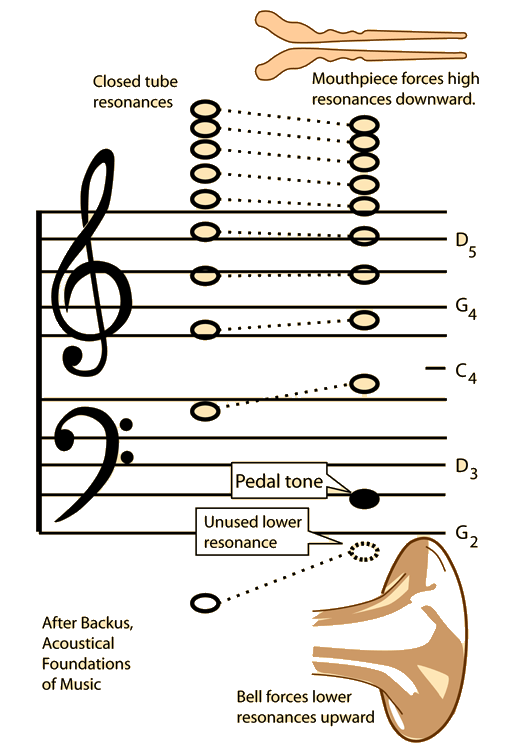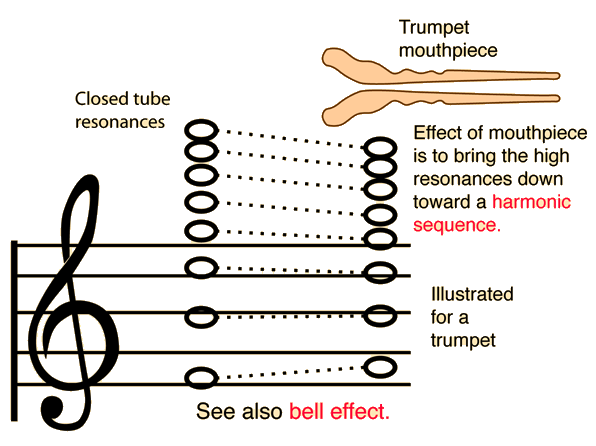Producing a harmonic sequence of notes with a trumpet

A closed tube produces only odd harmonics, but it is desirable for a brass instrument to produce all harmonics - a full harmonic sequence. This is accomplished by forcing the resonant frequencies toward the harmonic frequencies with the acoustic effects of the bell and mouthpiece. The mouthpiece forces the upper resonances down (the mouthpiece effect) and the bell forces the lower resonances up (the bell effect). The result is close to a harmonic sequence, but the lowest resonance is discarded and an extra pedal tone can be played as the fundamental of the sequence.
Producing an exact harmonic sequence of notes has its problems, as may be seen from the values of harmonics in cents. The upper harmonics are not exactly in tune with equal temperament, and the seventh harmonic is particularly troublesome.
Brass concepts
Brass instruments
Musical instruments
Reference
Backus
pp. 263-4
| HyperPhysics***** Sound | R Nave |





